[no_toc]
San Pedro de Atacama and its surrounding landscape has to be the most unusual scenic location we have ever visited. Although this northern Chilean village is by no means a budget location compared to its northern and eastern neighbours, we just had to come here to see the Martian like landscape that we had so often seen only in pictures. I really wanted to see it for myself and photograph its uniqueness and it didn’t disappoint. It was also a good location to begin our road trip to Salar De Uyuni in Bolivia.

We arrived on the overnight 12 hour TurBus bus from the northern border town of Arica which was the starting point of our brief Chilean trip. I say brief as 6 days was all we were spending in Chile this time, enough to see the Atacama. It was May and already quite cold, we planned to return to Chile in Feb 2017 as part of our Antarctica/Patagonia trip.
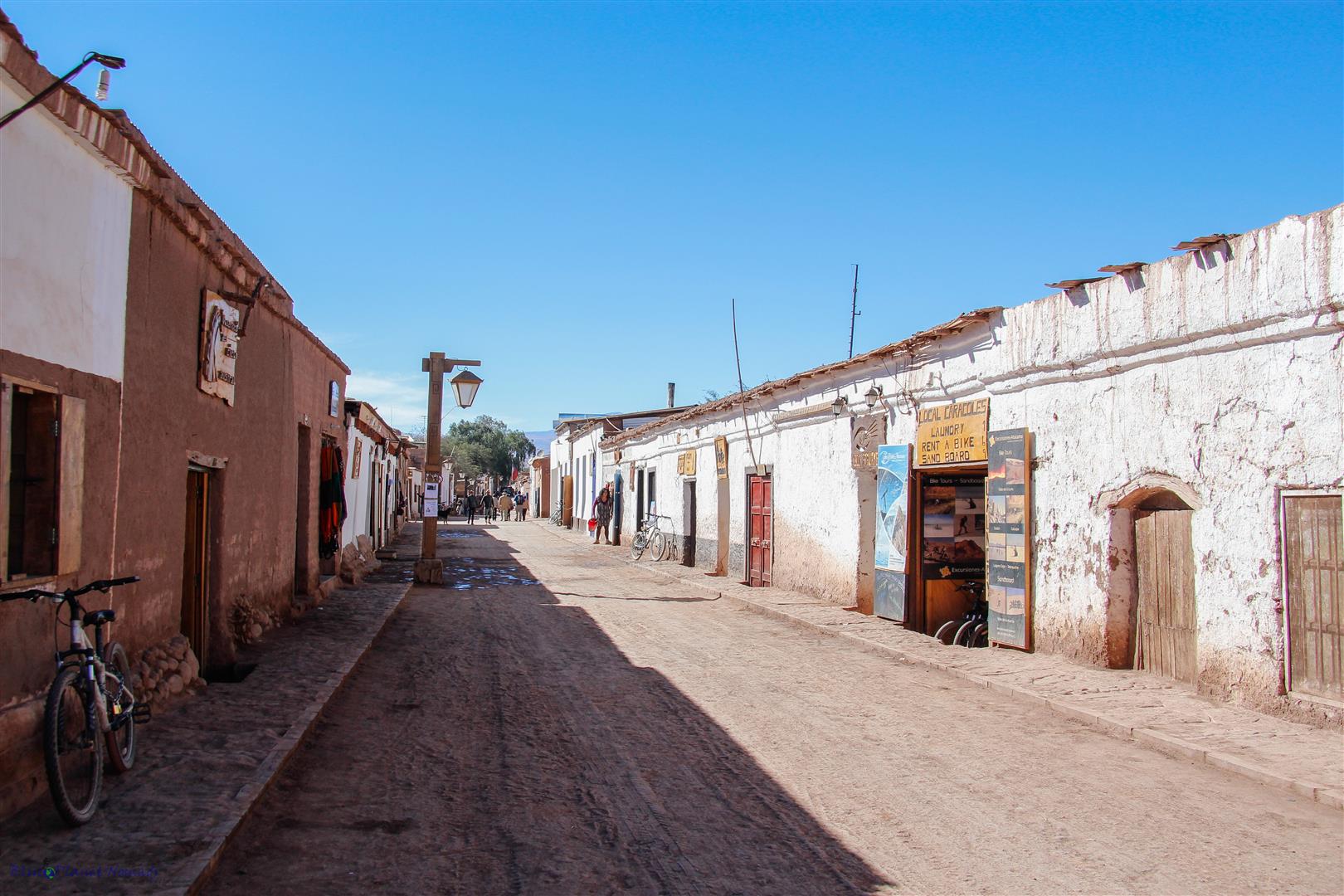
At first glance San Pedro feels like a town from the old west with its dusty streets and single story Spanish colonial white and reddish adobe buildings. This laid back small charming village is literally in the middle of nowhere 1670 km’s north of Santiago and sitting at an altitude of 2,400 meters (7,900 feet). Its reputed to have never seen rain as it sits in the centre of the driest desert in the world. Its climate is a reflection of its location with warm to hot sunny days and cold to freezing nights. San Pedro is packed with enough cafes, restaurants, accommodation options and tourist shops to keep travellers needs happy for a few days but its real draw is its spectacular surrounding landscape encompassing salt flats, sculptured canyons, sandy deserts, lagoons, geysers and active volcanoes.



Some Facts:
Time allowed: At least 3 days minimum to see the more popular attractions but really 5 or more days is better
Cost: Budget travellers $35 to $120 per day including accommodation, food and tours.
Accommodation ranges from $10 for a dorm bed in a hostel to many hundreds of dollars a night for a nice hotel. There are also AirBnB and Couchsurfing options.
We stayed in Hostel Candaleria. For US$50 we had a double room with shared bathroom and breakfast was included.
Tour Costs:
A half day tour is between US$14 and US$31
A full day tour around US$50
Please note tour costs do not include “Entrance Fees,” I have listed these costs for each of the tours we did.
Some sites can be reached by bike but choose the time of day for your pedal adventure very carefully as day time temperatures can be very hot and there is no shade 😉
We booked all our tours with Desert Adventure based on reviews from other travellers and they were excellent. Booking more than one tour gives you a discount. We booked two half day and 2 full day tours and saved ourselves US$100! Our saving meant one of the day tours was free 🙂
Food costs: There are plenty of cafés and restaurants but food is not the cheapest. There a couple of very small supermarkets selling basics.
Money: Try bringing as much with you as possible, there are 4 ATM machines in town and they have a habit of running out of money and don’t get refilled very quickly and are not always reliable. There are also money changers but their rates are hit and miss, so shop around.
Getting there:
If your coming from Peru like we did then you can pick up an overnight bus (TurBus or Pullman) from Arica which makes a stop in Calama to drop off/pick up passengers. WARNING: Calama is notorious for theft and thieves do board the bus looking for pickings so be awake and keep your belongings close.
From Argentina: Buses connect from/to Salta and beyond
From Southern Chile: A 20 hour bus journey will get you here from Santiago (TurBus, Pullman and Géminis)
From Bolivia: Easiest way to come from Bolivia is with a tour from Salar de Uyuni, the same is true in the other direction.
The Green Toad Bus hop on hop off backpacker bus will also connect with the more popular places.
Calama is 98k’s away and has an airport and there are direct flights from Santiago
Packing tip: Bring some warm clothes as a trip to the Geysers will freeze your butt off!!
Food: For such a small town the number of cafe’s and restaurants is quite substantial. I had both read and was told that Chile isn’t really renowned for its cuisine and they are right, the food isn’t amazing like its landscapes! It seems to lack variety and is quite pricey for what you get but then I haven’t been to Santiago yet so maybe there are more surprises there. The menus do lean towards Italian fare, so if you like pasta and pizza you won’t be disappointed. A few top places are Adobe, Roots, La Franchuteria
Things to do..
Most attractions are some distance from town so require a vehicle to reach them. There is also the option of hiring a bike for attractions closer to town if you wish to save some money. The most efficient way to see the attractions is with tours and there are plenty of tour operators in town with prices all similar and may even give you a discount if you book more than one tour with them.
Here is a quick summary of what to see and do:
- Cejar Lagoon, where you can soak in a salt lake and Ojos Del Salar (Eyes of the Salt Pan), two freshwater deep blue pools close together that resemble eyes.
- Tebenquinche Lagoon for magnificent sunsets over the Andes.
- El Tatio Geysers Geothermal Field.
- Lunar landscapes of Moon and Death Valleys.
- The intense green/blue lagoons of Miscanti and Miñiques.
- Salar de Atacama and National Park “Los Flamencos” Chaxas Lagoon where you can see three species of Flamingos.
- Rainbow Valley for its petroglyphs and colourful valley.
- Soak in Puritama hot springs.
- Archaelogical Tour to Tulor and Quitor’s Pukara.
- Stargaze at one of the clearest skies on the planet.
Some of the options above are combined into half and one day tours.
In San Pedro
The town is small enough to walk around and its main street Caracoles is where you will find a majority of the tour agency’s, shops and restaurants. The main plaza is a nice location to sit and enjoy coffee and lunch and watch the world go by. The plaza is a popular place for local events and performances by locals.
R.P. Gustavo Le Paige Archaeological Museum
If you have some free time this modern well laid out archaeological museum is worth a visit at only CHP$2,000 entrance fee. The museum houses a collection of some 380,000 pieces that were discovered in the surrounding region and correspond to a period between the origin of Atacama culture and the arrival of the first Spaniards.
Around San Pedro
Cejar Lagoon and Ojos Del Salar
- Entrance Fee: CHP$4,000
If you love photographing landscapes then you will love a trip to the lagoons. It offers some of the best panoramic and sunset views of the Andes with mirror reflections in Lake Tebenquinche. The best time to visit is in the afternoon and tours will usually leave at 3pm. You can cycle there but it is a 50k round trip and there isn’t any shade! The trip will start with a soak in the cool salty waters of Cejar Lagoon, the level of saltiness is said to rival that of the Dead Sea.




Your next stop will be ‘Ojos del Salar’ (Eyes of the Salt Pan), two freshwater deep blue pools close together that resemble eyes. Your guide will take you to the better of the two pools and you can take a dip (Warning: it’s very cold and its fun trying to scramble out the hole!) a more popular activity is to have someone take photos of you standing on the pool edge where you will get perfect reflections of yourself in the water.

The day ends with Pisco Sour and snacks at Lake Tebenquinche to watch the sunset over the Andes and witness the amazing colour changes and reflections in the flat mirror waters. It’s an experience not to be missed.




Geyser del Tatio
- Entrance Fee: CHP$5,000
The geysers sit at an altitude of 4,200 meters and are the 3rd largest in the world. For best photography, tours will make a 4:30am start for the 100km drive to get you there before sunrise. Once the sun comes up, the steamy spectacle is somewhat washed out by the sunlight.
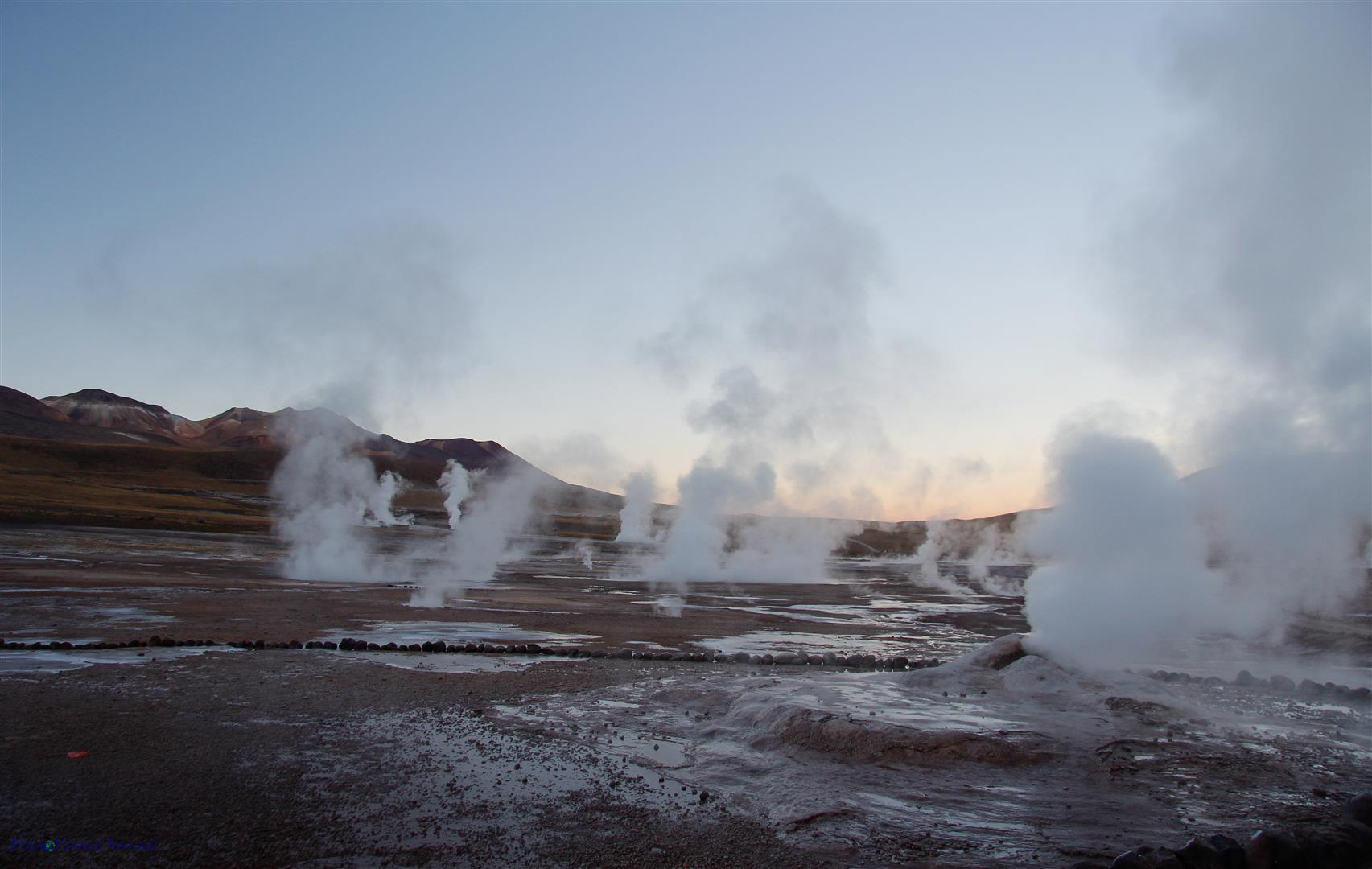

This is one trip you want to rug up for, the combination of the early morning and altitude pushes temperatures well below zero making it very cold. It was -11C when we went, the fingers and toes were complaining and the presence of boiling steam didn’t make it any warmer!
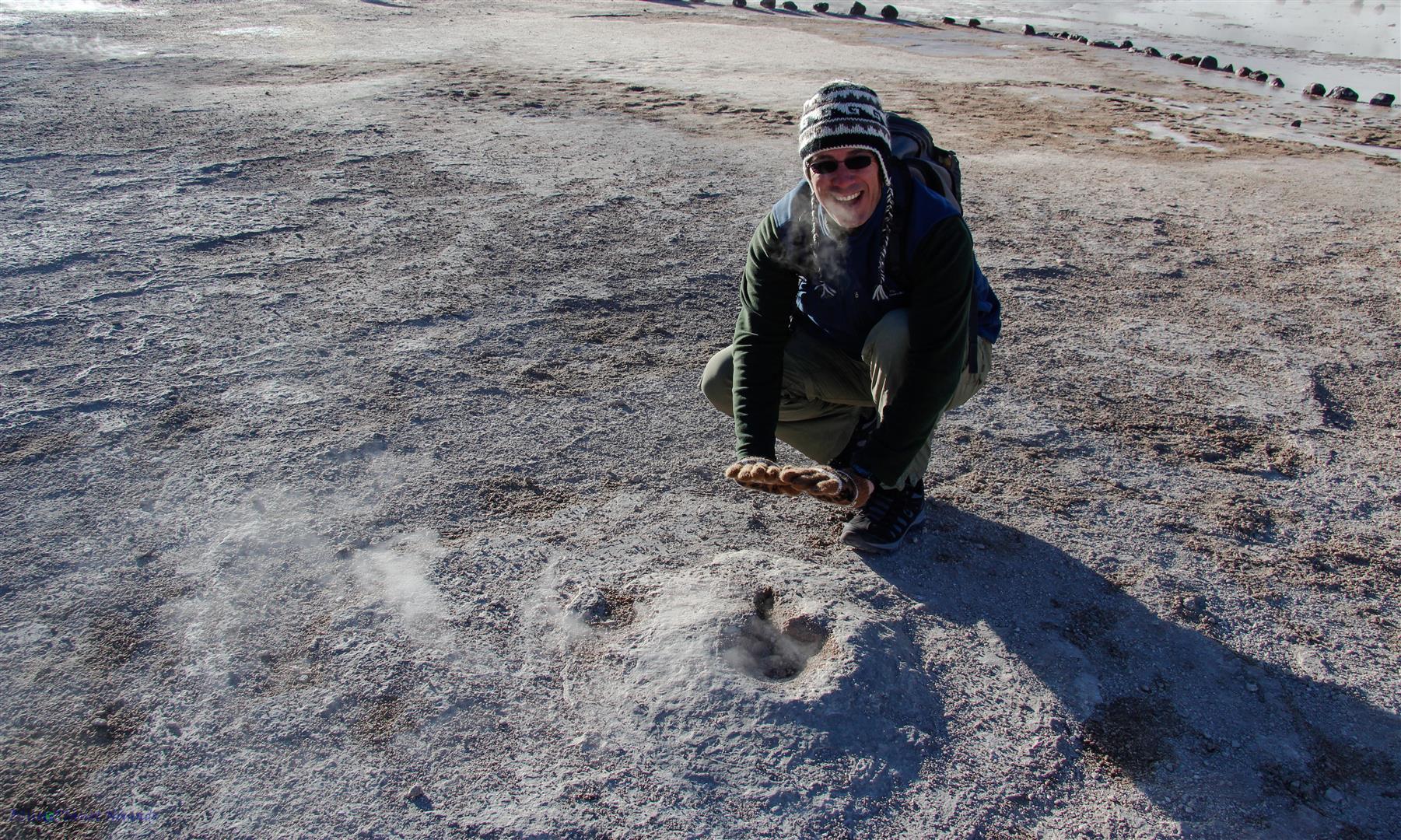
On the tour we were provided with breakfast and our guide made use of mother nature to boil our eggs and warm our chocolate milk.

The geyser field is home to some 80 geysers and fumaroles making it a spectacular site. Once the sun is up and you have finished your breakfast there is an option to take a dip in the nearby thermal pool if you can brave the freezing cold air that is. We gave it a miss, even with the sun up it was still minus 5C!

On the drive back, it’s typical to find wild vicuñas grazing on the tufts of grass. We were also lucky enough to see a Culpeo fox.

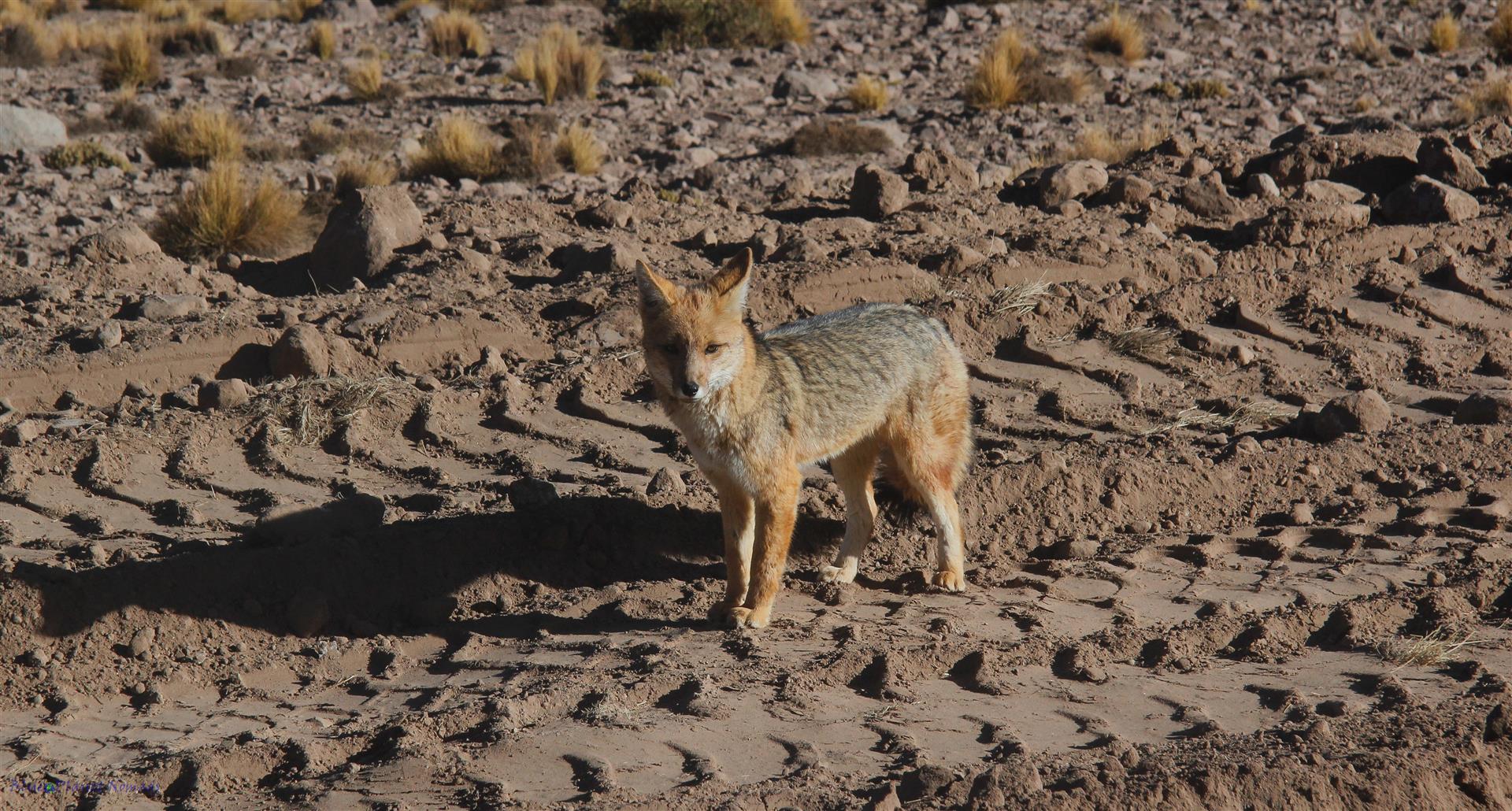
Another stop we made was at lagoons of the Putana River. Here you can find many bird species and the backdrop of the volcanic landscape which makes for some amazing photography.

Our final stop was as the abandoned altiplanic village of Machuca where people once lived from the mining of sulphur. A few locals remain to service the many tourists that pass through.


On the way back to town we saw more magnificent landscapes from the window of the bus. The tour has you back by lunchtime giving you the afternoon free and you may even want to join another tour like we did.
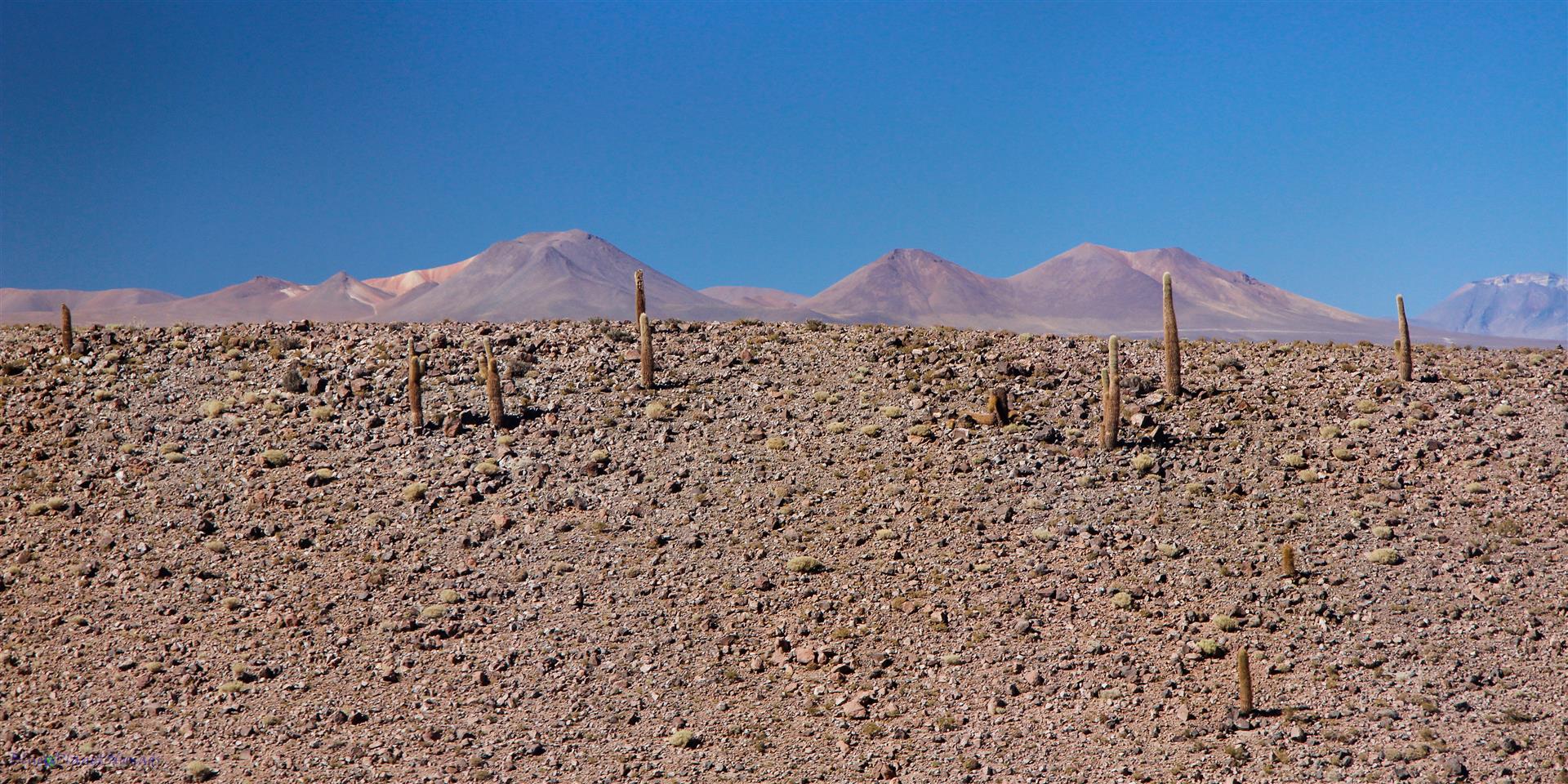

Valle de la Luna (Moon Valley)
- Entrance Fee: CHP$2,000
The carved out canyons, salt caves and eroded Martian looking landscape resembles something from the American South West. This is an afternoon tour as it takes in the best lighting conditions to see the changing colours and finishes with a sunset vista over Moon Valley from the top of the big dune. Your first stop with be a vista point over “Cordillera de la Sal” (Salt Mountains) formed millions of years ago from an old lake. Over time the mountains have been carved and sculptured into the “Valle de la Muerte” also known as Death Valley.

We took a closer look at the valley and walked between the canyon walls and crawled our way through the salt caves.

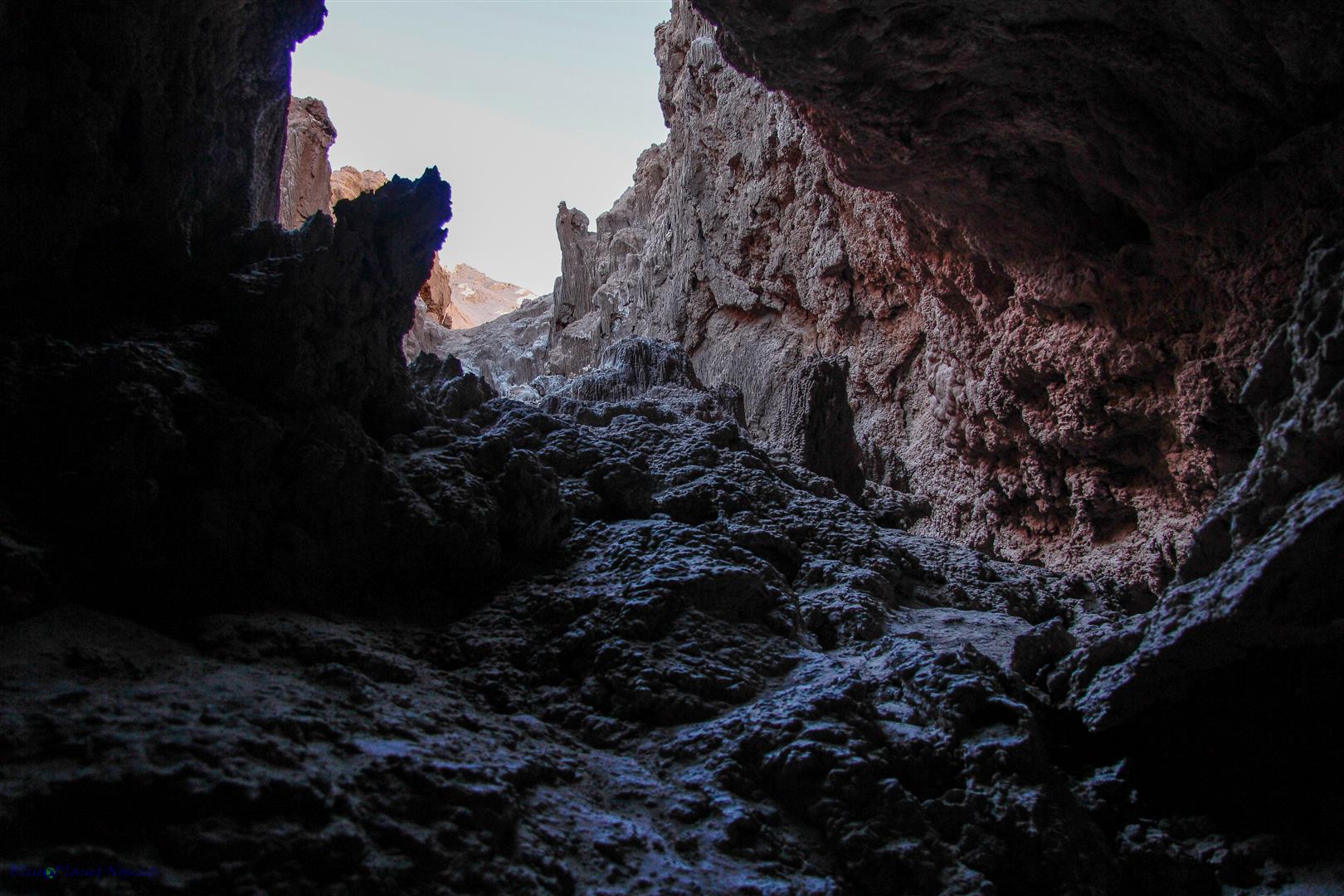
Visiting the “La Tres Marias” (The three Marys) in the Valle de la Luna (Valley of the Moon) was like being transported back in time to when we visited the White Desert in Egypt. These desert formations struck a remarkable resemblance to what we saw in the White Desert.
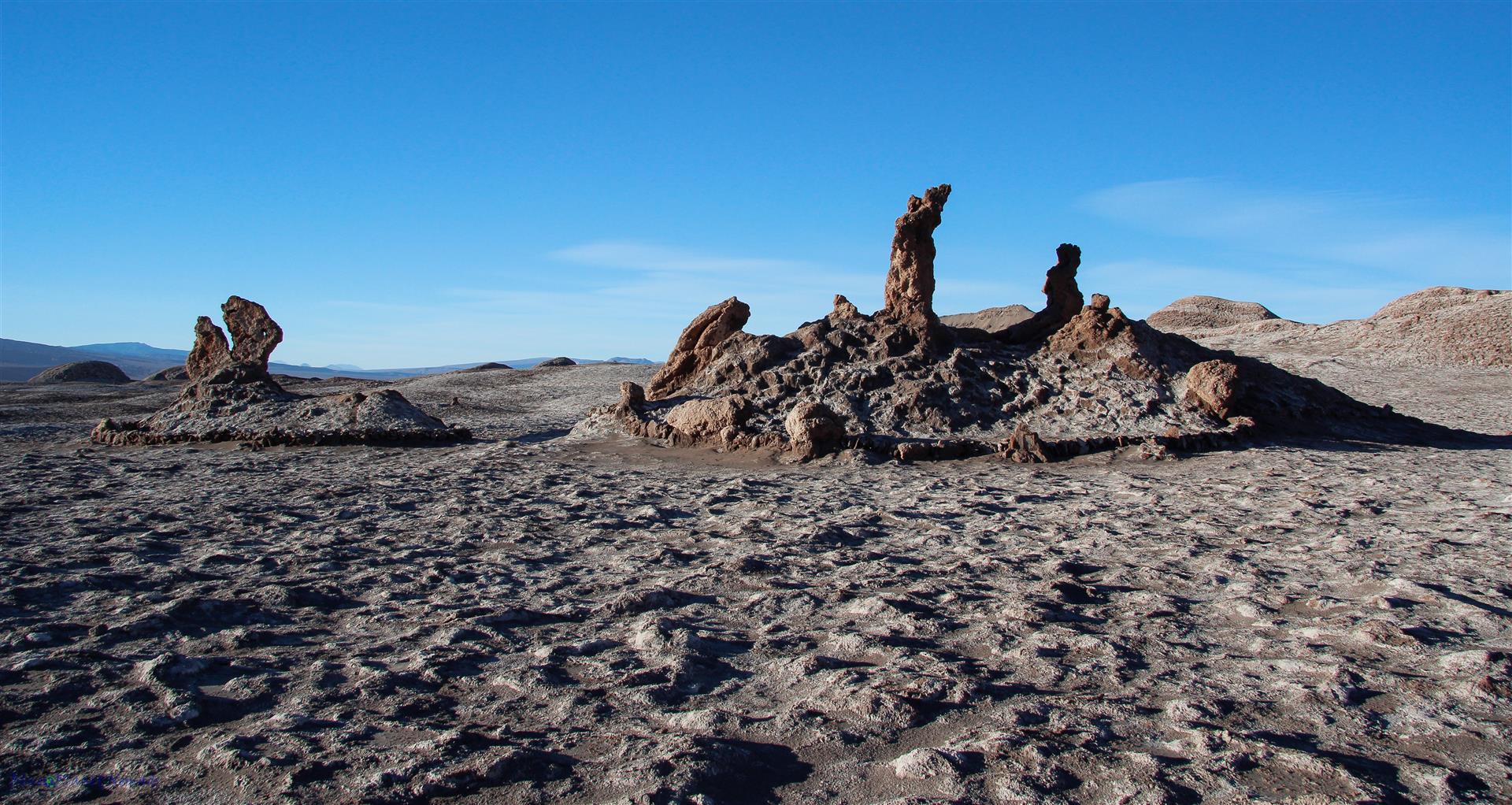
As we moved into late afternoon we climbed the big dune (not too difficult) to the top and positioned ourselves to await a spectacular sunset. The ever changing colours from light red to pinks to dark red was pretty amazing and worth the climb!
This is another tour where you want to pack some warm clothes and have comfortable walking shoes. Once the sun goes down its gets pretty chilly.


Altiplanic Lagoons
- Entrance Fee CHP$5,000
Large desert salt pan, lagoons, flamingos, blue/green lakes and incredible lunar scenery are the features of this one day trip. Out first stop was Toconao Village where we visited a church.

The Salar de Atacama is the third largest salt flat in the world, it’s neighbour Salar De Uyuni in Bolivia takes the top spot as the largest.

The Atacama Salt pan is a little different in that it has lagoons that attract birds and other wildlife. The most photographed of these being the three species of Flamingos, James, Andean and Chilean. The black and white Andean Avocet are commonly seen as well.


Unlike other salt pans that have a mirror like smooth white surface the Atacama pan is crusty and is a mixture of white and grey in colour. A 400 meter loop trail gets you close to the lagoons for spotting flamingos but we were a little unfortunate that they were at the far end of the lagoons so I was unable to get any close up photos. The flamingos sift through the salty water to feed on shrimp.


The drive to Miscanti and Miniques lagoons gave you an appreciation of the vastness of the barren landscape and we took the opportunity to stop for a photo on the endless highway.


The Miscanti and Miniques lagoons are at an altitude of over 4000 meters making it very cold. The lagoons were a stunning rich colour of blue/green backed by incredible volcanic scenery and best viewed from elevation.

 Socaire Village is where we stopped for lunch and again on the way back we visited a pretty adobe church.
Socaire Village is where we stopped for lunch and again on the way back we visited a pretty adobe church.


Other activities and places to visit
Puritama Hot Springs
The hot springs are a pleasant temperature of 33C. It boasts clear blue water with stunning surrounds.
Valley del Arcoiris (Rainbow Valley)
A mix of minerals creating a photogenic rainbow colourful valley and ancient culture in the form of petroglyphs.
Archaeological Tour
Two sites are visited – Pukara de Quitor, an ancient fortress built in the 10th century and Aldea de Tulor, the oldest village in the Atacama basin, approx. 3,000 years old and is in pristine condition.
Star Gazing
Absence of light pollution and rain clouds means the Atacama is one of the best locations on earth to see the night sky. It was something we really wanted to do but we chose to give it a miss in the end as we had read you don’t get too many opportunities with the telescope as you are sharing it with many other people. You spend more time standing around in the cold listening to the astronomer explain the basics of the night sky which is great if your new to the subject. Vaughan is very knowledgeable on the subject already so we thought it might be a waste of money for us.
If you are interested in this activity then Atacama Desert Stargazing has a good reputation
Mountain Climbing
There are a variety of mountains to climb catering to many levels of difficulty although most are over the 5500 meter mark!
In our next posting we pick up a three day tour that takes us to the largest salt pan in the world – Salar De Uyuni in Bolivia.. so stay tuned 🙂
If you have enjoyed the photos? then the complete gallery can be viewed in the Trip Photos


